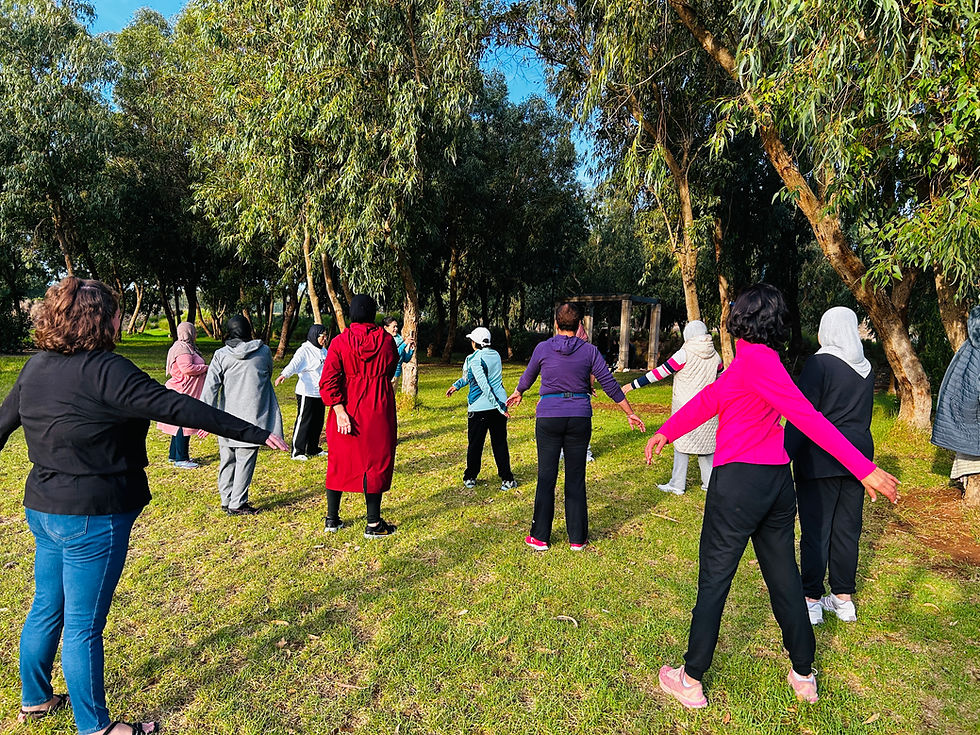Conversations About Modesty
- Allyson Gilbert
- Oct 11
- 3 min read
When I was preparing to move to Morocco, modesty came up in almost every conversation.
“Make sure to bring clothes that cover your shoulders.”
“Loose-fitting is better.”
“You probably won’t wear shorts much.”
They were all right — but what I’ve learned since arriving is that modesty here is more than a dress code. It’s a form of respect, an unspoken conversation between people and place.
In Morocco, modesty is expressed in many ways — in how people greet one another, in the gentleness of tone, and yes, in how they dress. It’s not about erasing individuality; it’s about belonging to a shared rhythm of community. I’ve noticed that when I choose clothing that aligns with local expectations — long pants, flowy tops, dresses that reach the knee or below — I’m not just being polite. I’m signaling that I see the culture I’m in, and I care enough to adapt.
That doesn’t mean I haven’t stumbled through a few missteps. Early on, I wore a dress that fell right at my knees — not short by my usual standards, but shorter than what’s typical here. No one said anything, but I felt every glance. It wasn’t judgment, exactly — more like a reminder that even small choices carry meaning. Since then, I’ve leaned toward my longer dresses and linen pants, and I’ve found comfort in knowing that my clothing choices help me blend into the rhythm of life here.
That said, there are still times I choose to wear shorts and tank tops — on especially warm days, or when I’m just walking near home. I’ve never felt uncomfortable doing so, but I do feel different. It’s not that anyone treats me poorly, it’s just that I don’t feel as integrated, as if I’m watching from the edges rather than participating fully in the flow of daily life. Those small moments remind me that blending in isn’t always about conformity — sometimes, it’s about connection.
What’s surprised me most, though, is how this shift has changed how I feel. There’s something grounding about being more intentional in how I present myself — not because I’m trying to blend in, but because I’m trying to listen. In a way, it’s taught me that modesty can be an act of mindfulness.
And yet, modesty doesn’t erase style. Moroccan women are masters of elegance — I’ve frequently seen stunning two-piece suits in bright colors and sleek cuts, effortlessly blending tradition with modern sophistication. And the scarves — vibrant, patterned, flowing — seem to tie everything together, both literally and symbolically. Each one feels like a reflection of personality and pride, transforming simplicity into grace. It’s a reminder that covering up doesn’t mean fading away; it means showing up differently.
In many ways, that same balance — of tradition and progress, of quiet strength and visible impact — is at the heart of my project here. The women I’ve met who work in STEM, who teach, who lead, do so with a kind of confidence that doesn’t need to announce itself loudly. It’s steady, capable, and deeply rooted. Modesty here isn’t about restraint — it’s about self-assurance. And that, I think, is a lesson worth carrying home.




Comments